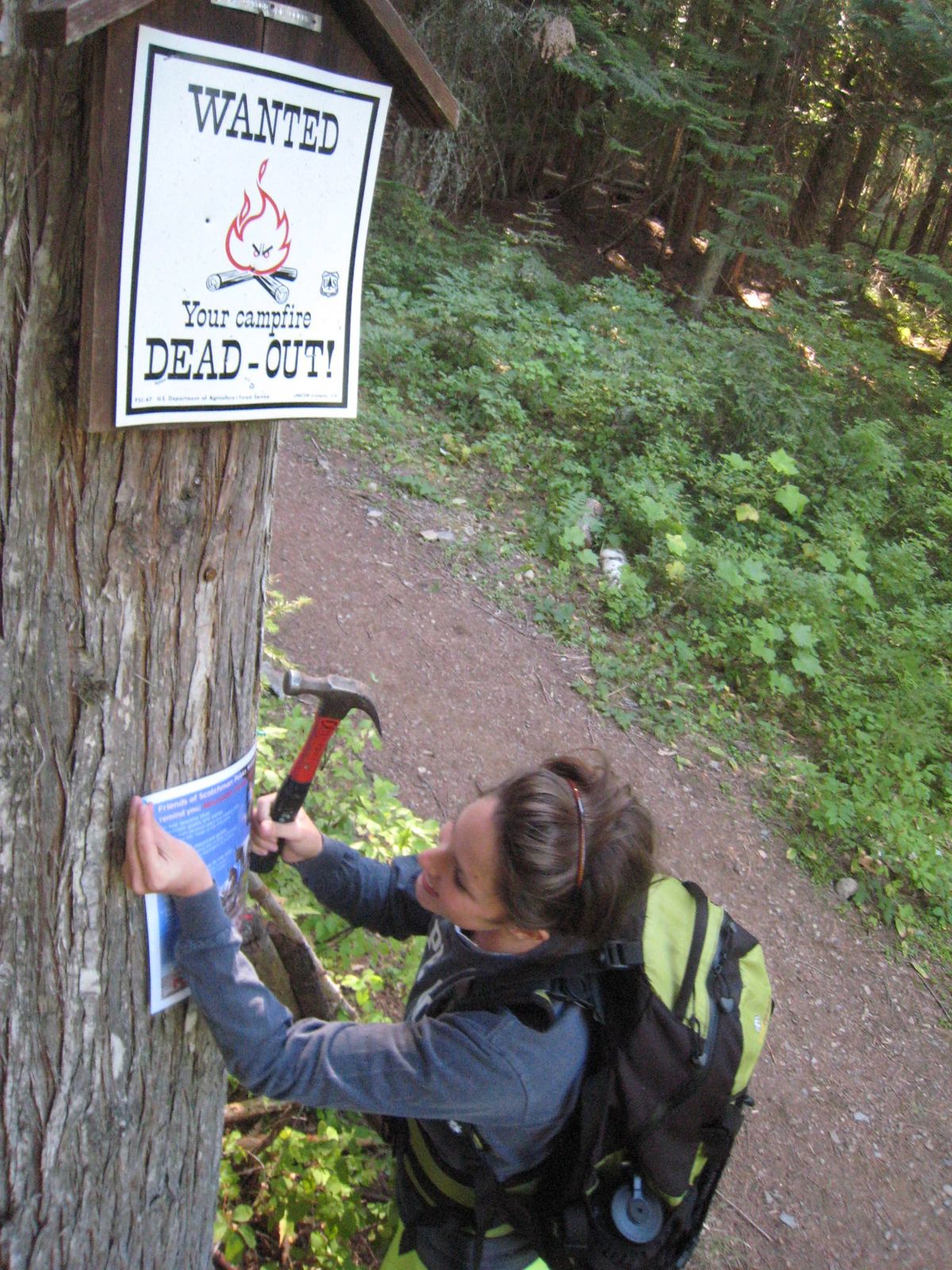Scotchman Peaks continues mountain goat awareness effort

WILDLIFE -- Three cheers for Gonzaga University student Molly Sullivan Roberge and others who've been putting up posters recently to help the mountain-going public learn how to be good neighbors with the mountain goats that highlight our high-country hiking trips.
Shown above, Molly is putting up a poster at the Scotchman Peak Trail #65 near Hope, Idaho. The posters printed by the Friends of the Scotchman Peaks Wilderness (in cooperation with state wildlife officials) identify a few practices that hikers should follow when hiking in goat territory. (See below)
So far, volunteers have posted signs at the trailheads to Goat Peak, Scotchman Peak, Star Peak, Pillick Ridge, Dry Creek, Ross Creek Cedars and Little Spar Lake.
Read on for details from the Friends of the Scotchman Peaks:
If you find yourself at a trailhead in the proposed Scotchman Peaks Wilderness in the near future, you might notice a new addition to the various signs that are posted at the beginning of the trail.
Friends of Scotchman Peaks Wilderness have taken the next step in our goat awareness campaign and have placed a goat poster at each of the major trailheads that access the high country. The posters identify a few practices that hikers should follow when hiking in goat territory. So far FSPW volunteers and staff have posted signs at the trailheads to Goat Peak, Scotchman Peak, Star Peak, Pillick Ridge, Dry Creek, Ross Creek Cedars and Little Spar Lake.
"This campaign is something we've wanted to do for a long time," says FSPW executive director Phil Hough. "Many of the goats in the high country of the Scotchman Peaks have become habituated and food conditioned, which can lead to human/goat interactions that could have detrimental consequences for both the humans and the goats."
Habituated means that an animal is very comfortable around people and tolerates them at a close distance. They no longer behave as if they fear humans. They are, however, still wild animals. Many of the goats are also food conditioned, which means that they are not only willing to be around people, but are actually attracted to places people live, or camp, or travel because they're hoping for some food.
Some will ask why having habituated and food conditioned animals is a bad thing and many people will remember the unfortunate incident that happened last October in the Olympic National Park when a hiker was gored by a mountain goat. The story had a bad ending for both the hiker and the mountain goat, the hiker bled out and the goat was identified and killed. It should be stressed that this was an extremely rare occurrence, it is the only known fatal attack by a mountain goat in the Olympic National Park's history. But the Friends of Scotchman Peaks Wilderness would like to prevent something like this from happening between the goats and hikers in this region, and other agencies and organizations have endorsed the effort. Idaho Fish and Game, Montana Fish, Wildlife and Parks, the US Forest Service and the Idaho Conservation League all lent their support.
"When we feed animals such as goats, bears, and other back country critters we endanger them and that endangers us," comments FSPW program director Sandy Compton. "So do yourself and the goats a favor, don't feed them, keep your pack with you at all times, take your bathroom breaks well off the trail, and don't forget that these animals are wild and unpredictable creatures."
Expect to see the posters in other areas of the Cabinets (one is already posted at the Grouse Creek Trailhead in the Pack River drainage), as well as the Selkirks, where ICL hike leaders will be posting them.
